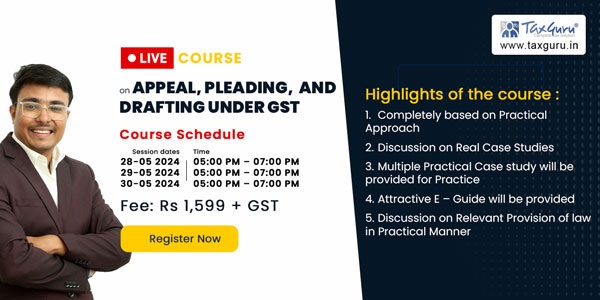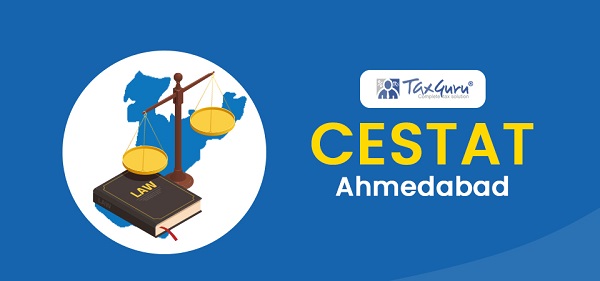*What is Capital Asset?
Section 2(14) of The Income- Tax Act
” Capital asset” means property of any kind held by an assessee, whether or not connected with his business or profession (with certain Exclusions specifically mentioned).
*Charging Section-
Section 45 of The Income- Tax Act
Any profits or gains arising from the TRANSFER OF A CAPITAL ASSET(as defined in section 2(47)) effected in the previous year shall be chargeable to income- tax under the head” Capital gains”, and shall be deemed to be the income of the previous year in which the transfer took place, if it is not eligible for exemption u/s 54, 54B, 54D, 54EC, 54F, 54G & 54GA.
*How to calculate Capital Gain?
In simple words,
Gain= Net Sale Proceeds – Cost
Section 48 of The Income- Tax Act
| Particulars | Amounts(Rs.) |
| Full Value of Consideration | XXX |
| Less: | |
| *Expenditure on transfer | XX |
| *Cost of Acquisition | XX |
| *Cost of Improvement | XX |
| Less: | |
| *Exemption u/s54 (if any) | XX |
| CAPITAL GAIN | XX |
Thus, it is crystal clear that one must necessarily have following two values for computing capital gain:-
- Net Sale Consideration
- Cost of Acquisition
*What is Cost of Acquisition?
Section 55 of The Income- Tax Act
Cost of Acquisition (COA) means any capital expense at the time of acquiring capital asset under transfer, i.e., to include the purchase price, expenses incurred up to acquiring date in the form of registration, storage etc. and expenses incurred on completing transfer.
*Now, what if Cost of Acquisition is not available for some reason or is indeterminable!!!
Some cases where Cost of Acquisition is indeterminable:
- In case of ex-ruler, where Capital Asset is acquired by way of conquest or jagir.
- If Capital Asset (say Land) is inherited from forefathers (i.e. it may be 100years old).
Computation of capital gains is possible where all of the following information is available :
- Date of acquisition,
- Cost of acquisition,
- Date of transfer,
- Consideration for transfer
The Supreme Court in the case of CIT v. B. C. Srinivasa Setty, 128 ITR 294, held that no capital gains tax is payable by an assessee where it was not possible to compute the capital gains u/s.48 of the Act. It held that capital gains could not be computed in cases where the cost of acquisition could not be conceived at all.
The observation, findings and the ratio of the decision in the said Srinivasa Setty’s case when applied to the issue under consideration, the following things emerge:
- It is essential to determine the cost of acquisition in the hands of previous owner where the asset was acquired in any of the modes specified in section 49(1). If such cost to the previous owner cannot be determined, there will be no liability to Capital Gains tax.
- No capital gain tax will arise if Cost of acquisition of Capital Asset is indeterminable.
- 55(3) reads as: “where the cost for which the previous owner acquired the property cannot be ascertained, the cost of acquisition to the previous owner means the fair market value on the date on which the capital asset became the property of the previous owner”, cannot be invoked in cases where the date of acquisition by the previous owner remains unknown.
The question has arisen before the courts as to whether such property of ex-rulers acquired by their forefathers by way of conquest or by way of jagir has no cost of acquisition, and the gains arising on sale of such property is not subject to capital gains tax, or whether such property has a cost of acquisition and the gains thereon is subject to capital gains tax on sale. This view taken by the Court in this case was followed subsequently by the Court in the case of CIT v. Pushparaj Singh, 232 ITR 754 (shares/securities transferred to the assessee by the government as a moral gesture), by the Gujarat High Court in the case of CIT v. Manoharsinhji P. Jadeja, 281 ITR 19 (property acquired by forefathers by conquest), and by the Madras High Court in the case of CIT v. H.H. Sri Raja Rajagopala Thondaiman, 282 ITR 126. The Punjab and Haryana High Court also took a similar view in the case of CIT v. Amrik Singh, 299 ITR 14, in the context of ownership acquired by the assessee by Court’s sanction in terms of section 3 of the Punjab Occupancy Tenants (Vesting of Proprietary Rights) Act, 1952.
Of course, this position of law has been slightly altered by the insertion of section 55(2)(a), which provides that the cost of certain assets shall be deemed to be nil in cases of the assets specified therein. Section 55(2) provides for adopting the cost of acquisition of certain specified assets, including the goodwill at Nil. It provides for cases of the goodwill, tenancy rights, loom hours, stage carriage permits, trade mark or a brand name associated with the business, no-compete rights, right to manufacture, etc. On a closer reading, it is seen that the assets specified for are the ones which are not acquired on a given day for a cost and whose value has been generated over a period of time on regular efforts made over a period(i.e. Self Generated Asset). The cost of such an asset including the cost of the regular efforts cannot be identified and quantified. The said section is not applicable in cases of the assets acquired on conquest or jagir or inherited from forefathers (say Land). In the circumstances, it is fair for the assessee to contend that the capital gains in his case cannot be computed as the cost of an asset so acquired could not be taken to be Nil.
-Complied by CA Preksha Choraria




























B.C. Srinivasa case says ” where capital gains is not ascertainable”
If IT department makes addition of full amount of sale consideration of a immovable property as STCG where assessee has not submitted anything regarding cost of acquisition, can the assessee use the decision of B.C. Srinivasa shetty judgement saying as there the cost of acquisition was not ascertainable, the addition could have not been made as capital gains, rather the same should have been income from other sources.
what is the treatment of capital gain if inherited agriculture land is sold. which has indeterminate cost of acquisition.
No doubt, a landmark decision of S.C.